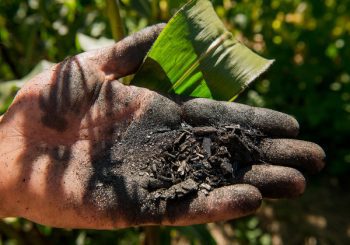By Amelia Harris
Staff Writer for Wake Up World
Deforestation rates are declining globally, but the Amazon bucks this trend, with rates on the rise. Why? Geopolitical reasons are complex, but one major contributing factor is gold mining: a study looking at the 34 years to 2017 identified 100,000 ha of rainforest lost to artisanal gold mining, 21% more than had previously been estimated, with 10% of the overall figure lost in 2017 alone (1). Mining strips rainforest trees and leaves behind damage to the waterways and natural ecosystems that result in a loss of wildlife and a myriad of other problems, but new research shows that there is an inexpensive and effective way to support reforestation in these areas.
[pro_ad_display_adzone id=”110028″]
What is Driving Rainforest Gold Mining?
When you think of gold mining, the Amazon rainforest is probably not what springs to mind. To understand why gold mining is increasing in the Amazon, we need to look at demand and the profit motive. Gold is mined around the world, but like most minerals in this modern age, demand is higher than the supply. The healthcare industry is a big user of gold, as is the tech industry – gold is used in mobile devices and cables and in environmental tech like solar cells. Of course, this precious metal is also in high demand by central banks and the fashion and jewelry industries (2).
As of September 2019, gold sold for around $1,528 per ounce, a staggering price closer to the highs of 2017 and 2018. (3) The high price for gold makes it more feasible to extract gold from places that weren’t profitable before, including deposits under the rainforest(4). Illegal mining in the rainforest has surged to what experts call “epidemic levels,” leaving deforestation devastation in its wake. (4)
Effects Of Rainforest Deforestation
Rainforest deforestation disrupts a fragile ecosystem, with knock on effects throughout the environment. Some are obvious, such as the loss of habitat for plant and animals species and the destruction of indigenous homelands. Others are less visible but critical to the global climate, such as an increase in greenhouse gases. With less water in the air to return to the soil as rain, farmers find it harder to make the dry soil productive, which can lead to them moving on and creating more deforestation. Trees also play an important role in holding together the topsoil, so in areas of deforestation soil erosion can lead to flooding and the poor soil quality makes it harder to reforested trees to take hold (5).
Indigenous Wisdom is Supporting Reforestation
Recently, the Wake Forest University’s Center for Amazonian Scientific Innovation (CINCIA) experimented with an indigenous farming technique to support tree growth, which has been successful. Biochar, a compound made from slowly burning discarded Brazil nut husks, is added to fertilizer and used with transplanting seedlings. The results are improved height and growth of seedlings and an increase in the number of leaves developed. (6)
The experiment was performed in the Amazon region called Madre de Dios in Peru, where the height of illegal mining has occurred. Dirt that comes from the mining sluice has no nutritional value for the soil nor any organic matter that supports plant or microbe life. This makes it difficult to grow anything, but adding biochar to the mix improves the soil. The native peoples of Amazon started using biochar thousands of years ago and still use it today. Biochar improves the soil’s ability to hold water and reduces acidity. This creates a favorable environment for microbes, which supports plant life, and decreases the need for fertilizer re-application. The mining soil is extremely limiting, but treating it with biochar makes it something plants can grow in (6).
We know that deforestation is a critical threat to our planet (7). The push for profit which drives gold mining and other deforestation activities is complex and not about to be resolved. However, it’s a sign of hope that something as simple as as ancient indigenous wisdom could help us to create reforestation techniques which can work within the damaged environment, providing an effective, low-cost solution for areas which have suffered from gold mining.
Sources:
- https://www.mdpi.com/2072-4292/10/12/1903
- https://www.gold.org/about-gold/gold-demand/sectors-of-demand
- https://www.jmbullion.com/charts/gold-price/
- https://illegalmining.amazoniasocioambiental.org/Alvarez-Berrios_2015_Environ._Res._Lett._10_014006-288277fe0630f4d139f7046ca53c184d.pdf?lang=en.
- https://www.pachamama.org/effects-of-deforestation
- https://www.mdpi.com/1999-4907/10/8/678/htm
- https://www.theguardian.com/world/2019/jul/25/amazonian-rainforest-near-unrecoverable-tipping-point
About the author:
Amelia Harris is a writer and eco-activist, interested in health and all things esoteric, with a passion for sharing good news and inspiring stories. She is a staff writer for Wake Up World.
[pro_ad_display_adzone id=”110027″]







